Discovering Taisha Ryu Kenjutsu
An Interview with Yamamoto Tahahiro Shihan
February 16th 2019, Tokyo, Tsukishima Station 1 PM.
Nicolas Nothum, responsible for Seido's BudoStudies program, and Jordy Delage, Seido's founder, have a meeting with Yamamoto Takahiro Shihan of the Kenjutsu school Hyoho Taisha Ryu for a 3h Keiko (practice) and interview. Here is the story of yet another encounter with a Kobudo master and a fantastic human being.
Hyoho Taisha Ryu [兵法タイ捨流]
The Hyoho Taisha Ryu is a Koryu oriented towards Kenjutsu created in the late 16th century by Marume Kurando in Kumamoto Prefecture, on the Western island of Kyushu.
Marume was one of the four best students of Kamiizumi Ise-no-kami Fujiwara-no-Nobutsuna (1508 ~1572), legendary swordsman and founder of the famous Shinkage Ryu Kenjutsu school. After Kamiizumi's death, he decided to establish his own style that would include not only what he had learned from Kami-izumi, but also the experience gained through actual battle. He also added some very ancient Chinese and Indian martial art traditions and the philosophical and spiritual beliefs he had adopted. He called his style “Shinkage Taisha Ryu Kenjutsu”, which was later shortened to “Taisha Ryu Kenjutsu”.
The name of this Kenjutsu "Tai" includes different meanings, all of them expressing an aspect of the school’s teaching. It can mean “Significant”, “Body”, “Wait”, “Opposition”, or “Thick”, associated with the character “Sha”, which represents the loss, or the action of throwing away. Those many possibilities also represent the fact that martial art is a free practice that has to be researched thoroughly, and cannot be grasped or seized with just a few words. One characteristic feature of this particular school is the slashing direction of the “Kesagiri” cut, from right to left, as opposed to the more common, left to right cut.
Despite the end of the Samurai era with the Meiji Restoration in 1868, Taisha Ryu’s members continued to train, keeping the tradition alive for future generations. Currently, Taisha Ryu Kenjutsu is taught at the Ryusenkan Dojo in Yatsushiro, Kumamoto. The school is led by Uehara Eriko Soke and Yamamoto Takahiro Shihan, acting as technical leader. Uehara Eriko is the first female Soke of this school
Yamamoto Takahiro Shihan [山本 隆博 師範]
After the passing of the last Soke, Uehara Eriko, the granddaughter of 13th Soke Yamakita Takenori, took over the sokeship of the school. Since he is Uehara's senior and the direct disciple of late Yamakita Soke, Yamamoto Takahiro acts as technical leader of the school and assistant of present Uehara Soke. He is most welcome in a world in which female Soke are extremely rare and sometimes disrespected because of their gender.
In recent years, with a very open mind, Yamamoto Shihan started to work on the promotion of Taisha Ryu, participating in various events throughout Japan, accepting non-Japanese students and even establishing study groups in Europe.
This is this mindset that motivated us to request an interview, a request that was accepted immediately and with the expected positiveness that's emanating from Yamamoto Sensei.
After a warm welcome, we immediately joined the Dojo and set our cameras. Yamamoto Sensei had prepared some old documents, as we requested for the interview, and explained us the history of Taisha Ryu. After this quick introduction, the discussion shifted to his perception of Budo, and it immediately turned into a discussion rather than a presentation of his definitive opinions. After answering various questions about how we see Budo practice, how people see it in the West and how it influences our lives, we realized that we wouldn't have enough time to talk about everything we wanted to, so when the time of the interview came, we did a mix between our prepared questions and some new questions that appeared during our pre-interview discussion.
This resulted in the interview we present below.

Eriko Uehara & Yamamoto Takahiro
Interview, part 1
In this first part, we start of course by the presentation of Uehara Soke, Yamamoto Sensei, and Taisha Ryu itself. Quickly, the interview shifted to the meaning of Kenjutsu practice and its relevance in our modern world. From this point we re-centered the interview on what Taisha Ryu actually is, defining the concepts of Jissen Kenjutsu and the technical specificity of the school.
Talking about how Taisha Ryu was born, a question came to mind, "How accurate are historical plays" (or Jidai Geki in Japanese), technically speaking. Not very, it's quite obvious for a Budoka, but we wanted to have Yamamoto Sensei's opinion.
Inexorably, the discussion shifted again to the meaning of the practice, what kind of physical and mental benefits one can find in Taisha Ryu in particular and Kenjutsu in general. As it was definitely the topic both Yamamoto Sensei and we wanted to discuss.
We had to force ourselves to get back to the History of Taisha Ryu, and we decided to cut the first part here, before asking a question that was requested by Alexander Bennett in relation to his work on the Hagakure (Bennett published one of the best translation of the Hagakure).
[Hyoho Taisha Ryu] Yamamoto Takahiro
Kenjutsu & the relevance of Kobudo in the 21st century (1/2)
Interview, part 2
So this second part opens on the question about the Hagakure, requested by Alexander Bennett. Here is the full question:
In a discussion with Alexander Bennett, that you may know, and who published the latest translation of the Hagakure, I heard that Taisha Ryu might have had a connection with the Hagakure itself. He said that Taisha Ryu was the main form of swordsmanship for the Samurai of the Nabeshima Clan, while Shinkage Ryu was also taught at the same time. Does the Hagakure contain relevant information in relation to Taisha Ryu and what are your thoughts about the book?
To which Yamamoto Sensei answered very factually, in essence: very likely so, but it's history and we don't have much historical records, so we can only imagine what the connections were.
This question about the Hagakure was a good opportunity to talk a little about the old concepts behind this book but also behind the Samurai society. We talked a little about the philosophy of the Samurai, which led to a question that often comes to mind and is quite interesting in case of Taisha Ryu: What about the Ninjas?
Of course, we are well aware that Ninjas are not what is depicted in popular culture, but even from a historical perspective, actions led by Ninjas seemed to be quite out of sync with the ethics of the Samurai. It happens that Taisha Ryu has some records of Ninjutsu techniques in its archives, so we asked and we were surprised and pleased with the answer!
Time passed, and we still had a few factual questions, such as Taisha Ryu's connection with religion, the meaning of its Kuyomon Kamon (Family crest), and finally, one our most important question about Taisha Ryu's openness. How is this important to adapt to survive, and how does it relate to the rise of non Japanese practitioners in Kobudo today?
This allowed for a fantastic answer tinted of universalism. A universalism that really seemed incredibly natural and deeply honest from Yamamoto Sensei. A positive and bright conclusion that only appeals for another interview in the future!
[Hyoho Taisha Ryu] Yamamoto Takahiro
Hagakure, Ninjas, Religion & Universalism (2/2)
Taisha Ryu as a (Ko)Budo
In this article, we use the word Budo in its broader sense, so it encompass both Budo and Kobudo, or more factually all Japanese martial arts that emphasis on the famous "Ningen Kessei no michi" or "Way of self perfection/improvement". Those Budo and Kobudo are not only educational methods or fighting methods, they, through the centuries, adapted to their time and became in some ways art forms.
Yamamoto Shihan demonstrate a very interesting point of view on the relations between traditional arts such as Sado (Tea Ceremony), Noh (classical Japanese musical drama), and martial arts. It was also clear that Yamamoto Sensei is not only "teaching" to his students, he is learning from them, the same way he was learning from us, asking us so many questions. A mindset that makes him not only a Kenjutsu master, but first and foremost a very open and proactive human being.
During our discussion, Yamamoto Sensei mentioned an expo taking place in Italy, organized by the local Taisha Ryu study group, an expo called "Saburau". Saburau is a derivation of the word Samurai that mean "To serve by one's side", but of course also has a much deeper meaning. For reference, you will find the video trailer of the Expo below that we shared on our Youtube channel to help promote the event.
Japan Samurai Expo 2019「侍う-SABURAU in ITALY」
This vision of martial practice as art forms is something we share with Yamamoto Sensei (and with most Kobudo and Budo masters for instance). This is one of the main reason of the creation of our BudoStudies program, explains why we spend so much time editing videos of demonstrations that we share through our Youtube channel. Budo not only deserves, but need, to be presented for what they are, forms of arts. Taking that away from those martial forms that have no direct modern applications means taking away the centuries of evolution they went through to become more than just fighting techniques. It's taking away all the relevance they may have to us, humans of the 21st century.
For this, we are very happy to have the opportunity to work with Taisha Ryu and with Yamamoto Sensei and we are already working on future projects together.

Ancient scrolls from the Hyoho Taisha Ryu's Archives
Friendship through Budo
This meeting with Yamamoto Sensei was yet another game changer for us. Of course, we shared many opinions on what Budo were, are or are supposed to be, but we also had different opinions on certain topics and the discussion went on after the interview. Until the point we realize that we still had more to discuss, and ended up having diner all together, with Uehara Soke and all the students in a Monjayaki restaurant nearby.
Very naturally, we kept contact and are already talking about our next meetings. Be it to work together on the promotion of Budo and Kobudo, or to exchange our personal opinions and perspectives it is certain that this interview was the beginning of a friendship.
When asked on what practicing Budo is relevant, I would answer that the ability to connect and exchange at a deep level with someone you never met and who is from a different culture, through a common appreciation of Budo, is already a very good reason for practicing Budo. This BudoStudies program allowed me to meet with many incredible human beings, and each and every single encounter is yet another step in my own way of improvement. I hope those this feeling is conveyed in our interviews.

Jordy Delage & Yamamoto Takahiro
Ressources
- The last Taisha Ryu Demonstration published on our Youtube Channel:
- Hyoto Taisha Ryu Japan Facebook Page
- Hyoto Taisha Ryu Italy Facebook Page
- Hyoto Taisha Ryu Australia Website
- Hyoto Taisha Ryu Japan Website
- A very good article in Hiden (in English) by Grigoris A.Miliaresis: Hyoho Taisha-ryu: The best under heaven in the West

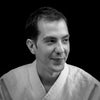
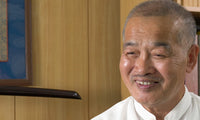
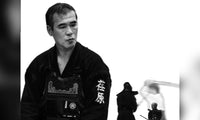
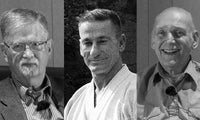
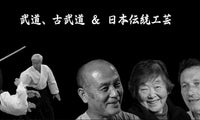
0 comments - Interview with Yamamoto Takahiro (Taisha Ryu Kenjutsu)